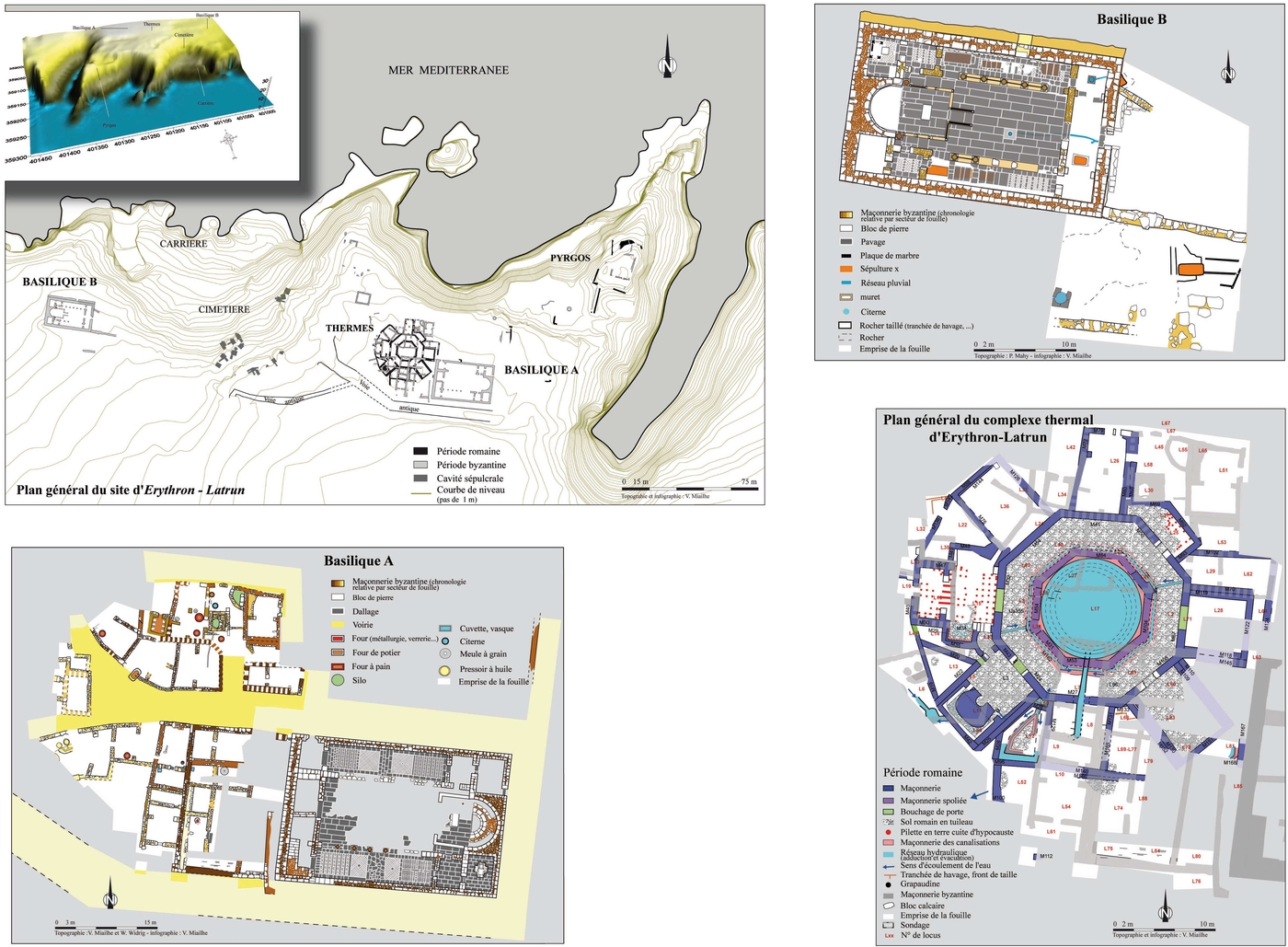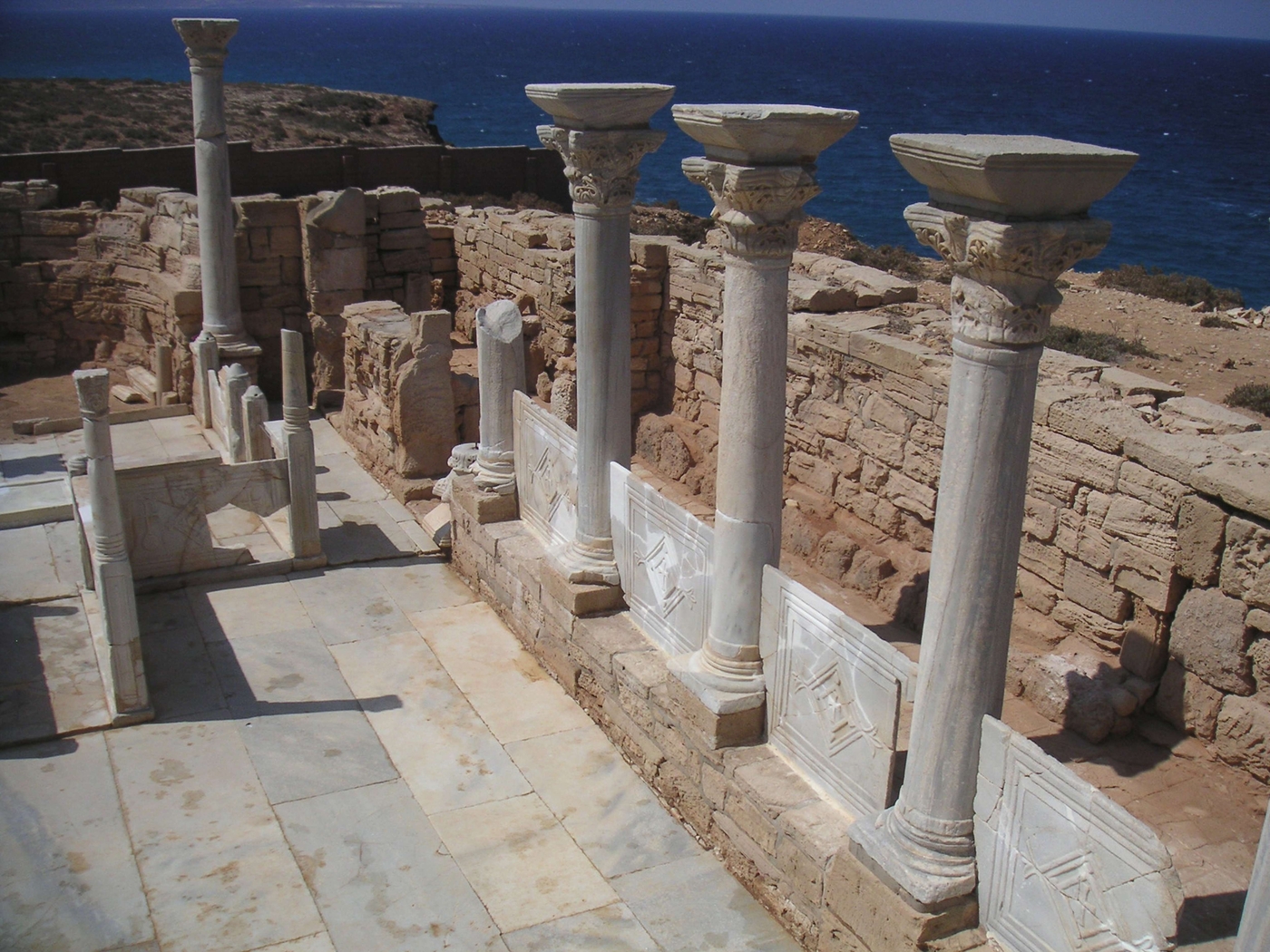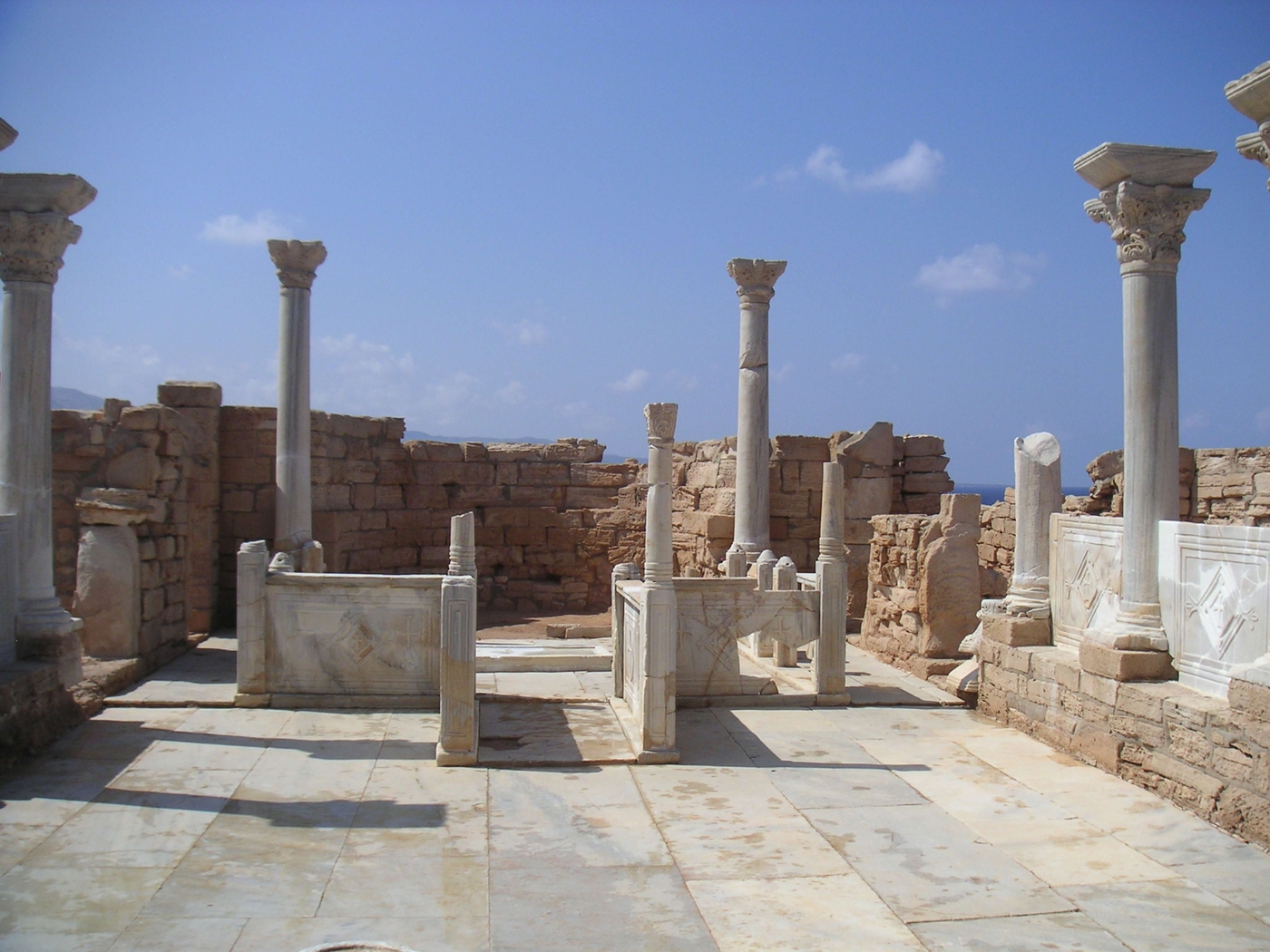Erythron-Latrun
In 2001, the French archaeological mission in Libya, then working in Cyrenaica, studied the ancient site of Erythron (now the village of Latrun), on the Libyan coast, 35 km to the east of Apollonia. Work on the site has made it possible, for the first time in Libya, to analyse the occupation of a village between the 4th century BCE and the 8th century CE, from the Hellenistic period to the Roman and Byzantine periods.

Founded in the Hellenistic period (4th-3rd century BCE), Erythron grew rapidly into a village or large town in the Roman period, before becoming the seat of a bishop from the second half of the 4th century, when it grew to its largest extent, as evidenced by its urban planning.
Conservation of two churches
With its fertile soil and permanent water source, Erythron derived its wealth from agriculture, including oils and water-based cereal crops. This helps explain the large quantity of marble imported at great expense from Proconnesus in Greece to decorate the town’s two churches, which provide a fairly clear picture of its prosperity during the Byzantine period. The two churches fulfilled specific and complementary functions. The first was a centre of pilgrimage where pilgrims came to venerate the relics of a saint or martyr; several elite burials were found inside the ad sanctos building. The second larger church in the centre of the agglomeration was the cathedral with a baptistry.
Following the initial excavation carried out by the American Walter Widrig in 1960-1961, the two buildings were conserved in the 2000s: the western basilica under the supervision of Vincent Michel, and the eastern basilica under the direction of Daniel Ibled, with financial support from the Commission des fouilles, the French Sénat and Total Libya. The materials were in a state of conservation sufficient to restore a vertical aspect to the buildings, including the partial restoration of the colonnades, intercolumniation plates, and the choir.
Roman baths
In 2006, archaeologists began excavating the centre of the agglomeration, revealing an original bath complex. The extent of the bath complex and the quality of its construction suggest it was built by an aedile on a large scale for a village. Orthogonal in shape, it is structured around a porticoed circular pool. Rooms with various functions ‒ latrines, warm room, reception room, etc. ‒ were organised around it.
These Roman baths are unusual for another reason: built from the late 2nd-early 3rd century CE, they were no longer used as baths at the end of the 3rd century and were steadily transformed, probably into a villa with a reception room complete with a rare stibadium. The site was occupied until the 8th century.
The research team
The French archaeology mission in Libya was founded in 1976 by François Chamoux, and resumed in 1981 by André Laronde. Following his death, Vincent Michel took over the mission in 2011. Initially focused on the Greek-Roman period (as in Leptis Magna and Apollonia-Susa), it has constantly expanded its field of research to include Late Antiquity and Prehistory (Abu Tamsa). The complex security situation has shifted the focus to strengthening cooperation between the French and Libyan teams, with training in archaeology, archaeometry and conservation techniques, and post-excavation work.
Supported by the French Ministry for Europe and Foreign Affairs on the advice of the Excavations Board, the mission works to combat the theft and illicit trafficking of cultural property, which is one of the priorities of the French Ministry of Culture.
Learn more:
- The webpage of the Research centre on Ancient Libya
- The Mission on the website of the French Ministry for Europe and Foreign Affairs






